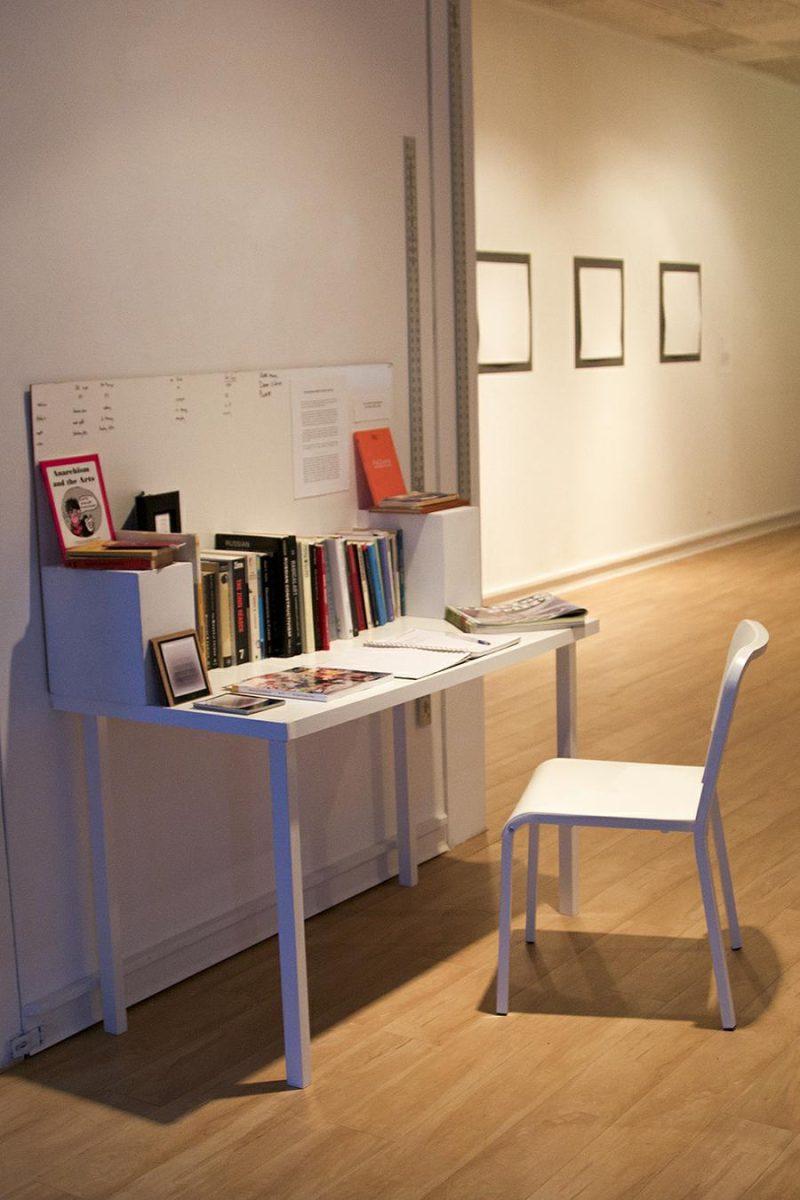Art can be defined in many different ways.
Sure, there are the primary categories of drawing, painting, sculpting and so on. Yet, when these categories are presented among different artists, each artist can give you something different, something that defines that category to them.
The late sculptor and professor Eric Sweet leaves me with that impression in the Biannual Alumni Exhibition: The (R)evolution of Sweet (Part II) held at the George Caleb Bingham Gallery on campus.
The exhibit showcases his style of printmaking and sculpture from 2010-2015 before he passed away this past April at the age of 44 from a heart attack.
Museum’s director Hannah Reeves explains this exhibit is different than most of the shows held at the gallery. During most shows, the artist is visiting from out of town and is present during the setup process, but this show is more sentimental because up until his passing, he taught at the art school.
Sweet’s wife, Catherine Armburst, a current MU faculty member, curated a huge part of the show herself. She focused on the key elements of his finished and unfinished artwork, while also putting emphasis on his absence.
For the exhibit, Armburst recreated Sweet’s desk at home, featuring some of his honors and many books from his bookshelf. It looked as if he had just stepped outside to take a quick phone call. Reeves’ favorite piece of the exhibit is that desk.
“It shows that he left work undone,” she says.
Armburst describes his style of art as “a blend of a kind of minimalist visual qualities based on the sort of minimalist genre with a kind of heavily conception base too. Essentially, Eric was interested in pushing the boundaries with what printmaking and drawing could be.”
“I’m essentially presenting unfinished work as finished work, so it becomes kind of its own conventional art in a way,” Armburst says.
A piece that strongly stood out to me at the exhibit was the Van Gogh book at the desk in the right back corner of the gallery.
Sweet had marked the pages of the book, adding his senses of artistry and humor. He took a Sharpie to the pictures in the book and crossed out some basic information about Van Gogh and rewrote it as if it were about him.
The book represents the elements of visual perfection and the controlled style of art that Sweet had mastered in the span of his career.
During his time teaching at MU, Sweet was always present in the classroom. He understood how to be flexible, which helped his students be successful.
Sweet left many things behind besides just his art.
“In 4th or 5th grade, Eric had a teacher, I think her name was Mrs. E Walters something,” Armbust says. “Anyway, she used to tell the students, ‘You don’t have to, you get to.’ It has spread, and I didn’t realize how widespread it was, and a lot of his students are now educators themselves. They’re now in their own classrooms and they’ve been contacting me telling me how they’ve used that in their classrooms.”
Reeves agrees with the sentiment.
“It’s a way of saying you are privileged to be an artist, you know, and for all of us who are artists, it’s just true,” she says.
_In honor of his work at MU, the Eric Sweet Memorial Scholarship Fund has been created to give back to kids who push outside the typical printmaking and drawing style here at the university. You can donate [here](https://donatetomu.missouri.edu/GiveDirect/Item.aspx?item_id=252):_








